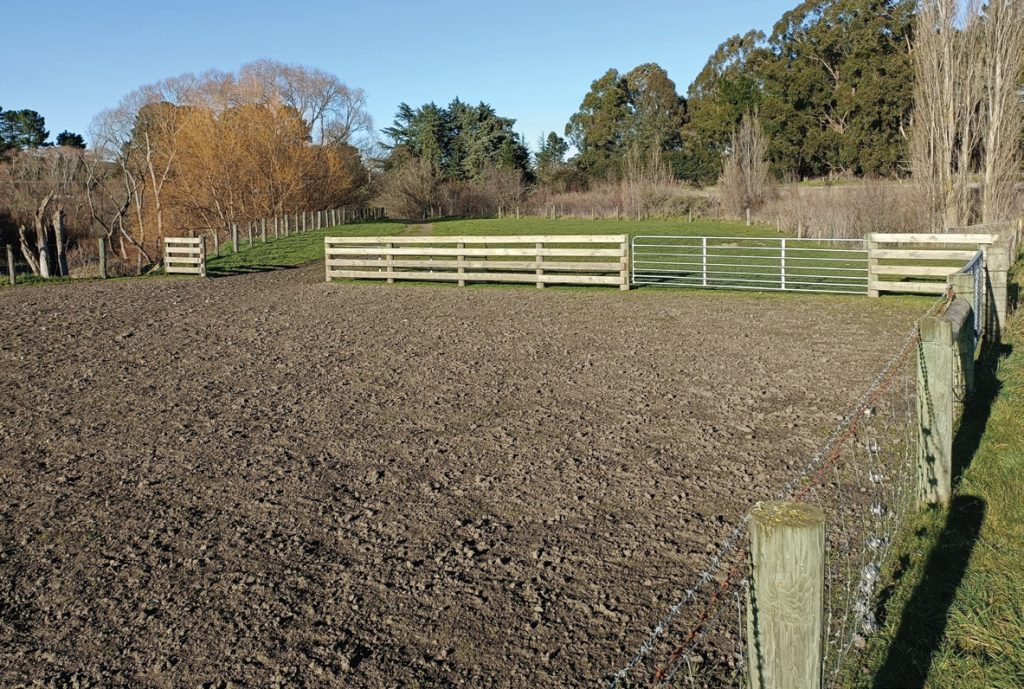Good design, happier life
Time spent working in sheep yards can range from satisfying to relationship straining. An ergonomically designed set of yards can not only save time, money and marriages, it will also bring the fun back to sheep work, James Hoban writes.

The following are things to consider when building or altering sheep yards. It is based on information from the New South Wales Department of Primary Industries, speaking to several other farmers, two sheep work contractors and the writer’s own experience working in a range of yards.
Planning
The planning stage is the most important part of building new yards. Start by talking to a scanner or contractor about the best yards they work in. Ask them who has yards that work well and then go and have a look at them. While it might not be possible to completely copy a set of yards for a different farm, it is worth understanding the key elements of what makes those yards work well.

A transition plan needs to be in place. If the existing yards are going to be unusable for a time while building the new ones, where will sheep work happen? Timing the building around peak sheep work will help.
When it comes to yard design, there are numerous templates freely available online.
Consider the size of the flock and the jobs that need to be carried out. Entry and egress are key. Can mobs easily come and go without too many obstacles in their way? During busy times such as weaning and scanning there needs to be enough space for multiple mobs and room to juggle mobs as required, including after drafting.

Other considerations when selecting a site include drainage, slope shelter, water supply and electricity. Existing yards might have been in the same place for generations but it doesn’t necessarily mean there isn’t a better site available.
Drenching and drafting races work best if they are different sizes. Having them in the same place is often not the best option. Building them individually and separately can result in the best flow.
It is common for people to rebuild something similar to what they already had. Sheep and people get used to a set of yards and make it work – this does not mean it is the best design. Building new yards might be a once in a generation activity and is a good opportunity to take time to consider a range of options.
Sheep behaviour
Not all sheep are created equal. Consider differences in breed and temperament. Without being specific, some breeds require stronger fences and higher rails than others. That said, most sheep still have the same natural behaviours.

Sheep can detect movement behind them without moving their heads. In a forcing pen it is important for sheep to be able to concentrate on the flow of the mob in the right direction without distraction. Closed panels help obscure the view of sheep behind them and people in front or beside them. Sheep should have a clear, unobstructed view towards where they are meant to move.
As the saying goes, sheep follow one another, and the strategic use of see-through panels or mirrors can encourage them to move. They run towards light spaces better than dark.
Wide gates help maintain good flow.
Ideally sheep should take a familiar route and direction through the yards for all handling operations. Entrances to sheds, loading ramps, dips and other handling areas should be placed along the route sheep usually take through the yards.
Do not try to get sheep to handle more than one change at a time. For example, going up a ramp or through a gate or around a corner or into a shed. If they are asked to do more than one of these things at a time it can be overwhelming for them and they are less likely to run.
People
Who does most of the work in the yards? Making access between yards simple can help shorter members of the family or staff get around the yards more easily. Styles and strategically placed people-gates can save a lot of pressure on hips and knees.
Future proofing
To ensure yards are fit for the future they should allow:
- Room for expansion
- Ability to handle larger numbers of sheep
- A dedicated area for contractors – scanners, conveyors, mobile dips. If this is well set up it will save half an hour of set-up time when these people arrive.
- Sometimes several sets of reasonably basic but effective yards are more convenient than one Rolls Royce option. This depends on property size and layout as well as mob size and handling frequency.
Materials
Everyone has their own preferences when it comes to yard materials. While most permanent yards are still built from timber with steel gates, there is always room for innovative components that suit individual situations.
Steel yards are a common option. Older steel yards and some cheaper options do result in noisy setups that can disturb sheep flow, but that depends on the yards and how they are constructed and fixed to the ground.
Having gates on site when posts are driven is a good way to ensure post placement is precise.
Latches need to be easy to use and robust enough to avoid accidental openings.
A hard surface underfoot is best. Concrete is expensive but the best option in most cases.




